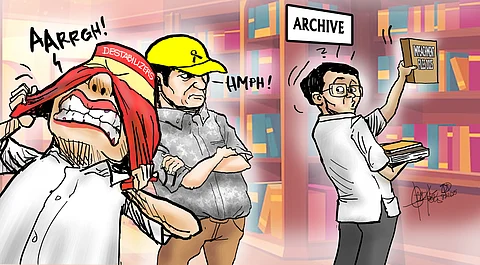Better luck next time
The Senate’s archiving of the impeachment case against Vice President Sara Duterte did more than avert a constitutional crisis, as it effectively terminated an attempt to undermine the credibility of the Supreme Court (SC).
The yellow hypocrites and the destabilizers had banded together against what they labeled as the Duterte court based on the simplistic equation of 12 of the 15 justices, including the Chief Justice, being appointees of former President Rodrigo Duterte.
Duterte, a stickler for judicial procedures, having once been a prosecutor, appointed the members of the High Tribunal based on their qualifications.
The SC’s ruling made clear that it was based on procedural defects committed by the House of Representatives.
The ruling did not address the merits of the allegations against VP Duterte but focused solely on constitutional compliance that is consistent with the judiciary’s role as a check on the proper exercise of power by co-equal branches.
It did not prevent future impeachment attempts, provided they adhere to constitutional and procedural requirements.
The High Court’s ruling was also a show of a strong consensus among the justices that the impeachment process was constitutionally defective. It reflected a shared interpretation instead of a politically motivated outcome.
The Tribunal has a mandate to ensure that all branches of government adhere to the Constitution.
Senator Rodante Marcoleta, in his speech, called for the dismissal of the articles of impeachment, comparing them to “half-cooked rice” due to the failure of the House to follow basic procedural requirements.
Among its defects were the lack of proper verification, failure to adhere to the House of Representatives’ rules, and violation of the constitutional provision on the one-year bar on impeachment complaints.
The rules required a valid verification that must include an affidavit stating that the complainant has read the complaint and the allegations were factual based on personal knowledge or authentic records.
The document presented was described as certifying only that the signatory was known to Secretary General Reginald Velasco, without meeting the substantive requirements of verification.
The Constitution (Article XI, Section 3, Paragraph 5) also prohibits filing more than one impeachment complaint against the same official within one year.
The submission of four complaints, later consolidated into one, was deemed a violation of this rule as it was attempted to circumvent the constitutional limit.
The Tribunal indicated that the filing of multiple complaints within one year undermined the constitutional safeguard against harassment through repeated impeachment attempts.
Also emphasized was that the House failed to adhere to its own procedural rules, rendering the complaint “void ab initio” or invalid from the start.
With the defective document, it was deemed that the Senate never acquired jurisdiction over the impeachment case.
The SC, stating the “void ab initio” nature of the impeachment articles, underscored that the procedural flaws were so fundamental that the Senate could not legally proceed.
It also based this on jurisprudence. In a 2003 ruling, the Court clarified that procedural compliance is essential for an impeachment complaint to be valid, and the Senate’s jurisdiction depends on a properly filed complaint.
The SC invalidated an impeachment complaint against then-Chief Justice Hilario Davide Jr. for similar procedural violations.
Former Chief Justice Reynato Puno affirmed the Court’s authority to intervene when constitutional violations are evident.
The ruling was portrayed as a defense of VP Duterte, but an objective review revealed that the House had fumbled the ball, believing it could disregard due process and the rule of law in its pursuit of a divisive process.
The majority of the senators were enlightened enough to see reason in the Tribunal’s call.


